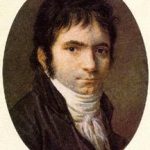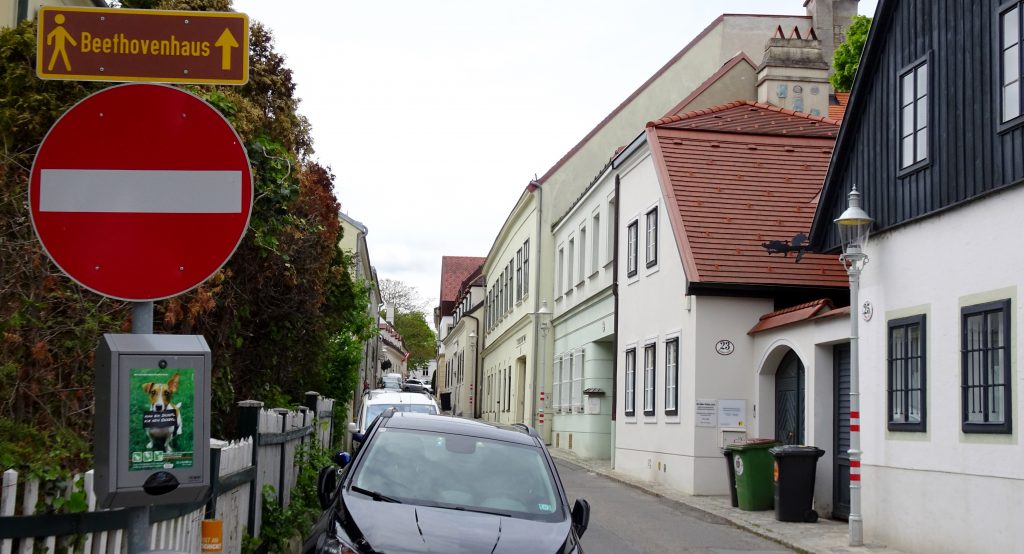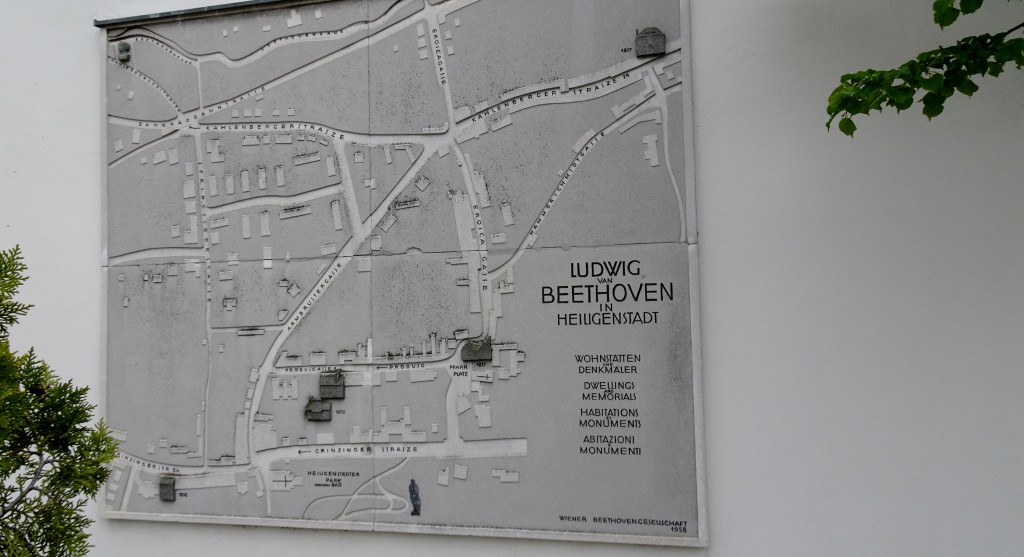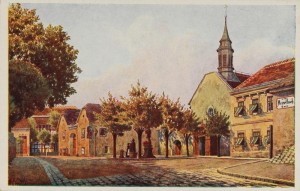 Does any composer have more plaques, statues, museums or memorial sites than Ludwig van Beethoven?
Does any composer have more plaques, statues, museums or memorial sites than Ludwig van Beethoven?
Top of the list are the 12 museums and memorial sites spread over five countries.
Vienna has a quarter of them. The city is also decorated with many of the more shadowy ‘Beethoven lived here’ and ‘site of the dwelling of . . .’ signs.
Beethoven was a restless soul and a demanding tenant who is known to have held simultaneous leases on two or even three apartments for his own use.
One book documents an eye-popping 87 apartment moves during Beethoven’s three decades in Vienna. Imagine the labour involved in moving all those books, manuscripts, printed scores and pianos, in a city without elevators.
One of these moves was to the rural village of Heiligenstadt, beyond the city walls to the north. Beethoven had by then been living exactly ten years in the Habsburg capital and made the move on the recommendation of the music-loving Dr. Johann Schmidt. He was Beethoven’s trusted, ‘intelligent’ doctor and his prescription was for the peace and quiet of the village, the local spa and its waters.
Although just 32 at the time, Beethoven had been alarmed by deteriorating hearing and persistent noise in his ears for five years and had already visited many doctors and tried all manner of medicines, oils, baths and infusions. He was to remain away from the bustle of Vienna in Heiligenstadt from May until October, 1802.
The personal drama Beethoven went through in Heiligenstadt is reflected in the four-page document, which he wrote in the depths of despair when he was even contemplating suicide.
Now known as the ‘Heiligenstadt Testament’, it remains Beethoven’s most famous literary text.
It is a heartfelt plea for understanding and sympathy from his brothers and from the world at large and in it, Beethoven confronts his feelings, faces his deafness and ultimately finds renewed determination and independence as a composer.
Although addressed to his brothers, the four pages were not sent to them during his lifetime and were found among his papers at his death.
The original German text (below) seems neatly copied out rather than a heat-of-the-moment original manuscript. Nevertheless, the emotions Beethoven was feeling at this personally tumultuous time ring out with aching immediacy and intensity.
Below is my reading of the ‘Heiligenstadt Testament’ translated into English, which I was moved to record shortly after visiting the village. . . now a leafy, but still tranquil suburb at the end of Vienna’s U4 subway line. (Click on the arrow to play).
The four pages of Beethoven’s ‘Heiligenstadt Testament,’ dated October 6 and 10, 1802



Probusgasse in 1896. Beethoven’s believed residence is in the distance, centre left
Beethoven is believed to have stayed at No. 6 Probusgasse in Heiligenstadt, though this is based on anecdotal evidence dating back to 1902, the centenary year of his visit. The City of Vienna now runs a museum at the site.

Probusgasse in 2016, facing same direction
Beethoven returned to Heiligenstadt for stays in the summer of 1807 and 1808 and again in 1817.

“Beethoven: Habitations and Monuments in Heiligenstadt” . . . now a minor tourist industry in
Heiligenstadt. This street map in the Pfarrplatz shows seven of them.

Pfarrplatz (Parish Place) in Heiligenstadt around 1910. It is two minutes walk from the Beethoven museum. Far left, another Beethovenhaus at Pfarrplatz 2. Centre, to the left of St Jacob’s church, entrance to spa. Far right, wall of a large winery where this example of Viennese Heuriger culture dates back to 1683.
 The two rooms of the museum shows Heiligenstadt at the time of Beethoven’s visits there and deal with his illness and death, including (above) a death mask and lock of his hair. The house itself, thoroughly restored in 1970 to something approaching its layout in 1802, in fact dates back to the 16th century. It is currently undergoing another refurbishment, with all the displays and furniture removed. Walking through the empty white building (early Spring 2016) alone, except for the occasional construction worker, was an extraordinary, somewhat melancholy experience, almost like entering a dead person’s house now that they are no longer around. It put me in the frame of mind to re-read the composer’s will and testament at the earliest opportunity.
The two rooms of the museum shows Heiligenstadt at the time of Beethoven’s visits there and deal with his illness and death, including (above) a death mask and lock of his hair. The house itself, thoroughly restored in 1970 to something approaching its layout in 1802, in fact dates back to the 16th century. It is currently undergoing another refurbishment, with all the displays and furniture removed. Walking through the empty white building (early Spring 2016) alone, except for the occasional construction worker, was an extraordinary, somewhat melancholy experience, almost like entering a dead person’s house now that they are no longer around. It put me in the frame of mind to re-read the composer’s will and testament at the earliest opportunity.

Probusgasse 6, now undergoing restoration


Street entrance to the Beethoven museum

Rear garden at Probusgasse 6
Beethoven’s First ‘Razumovsky’ Quartet, Op. 59 No. 1, was the first string quartet Beethoven wrote after his life-changing 1802 visit to Heiligenstadt. It is featured in the opening concert of the MusicTORONTO 2016 season, October 13, performed by the Juilliard Quartet.
© copyright 2016 Keith Horner – [email protected]





